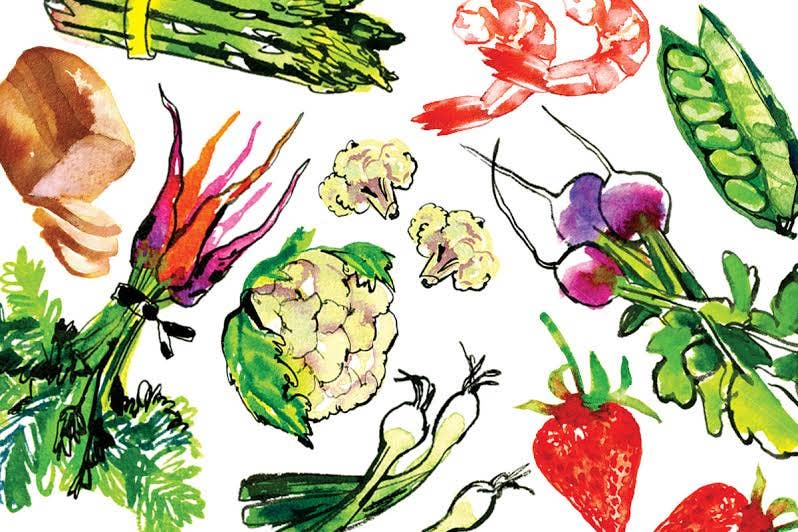
Like many a Hollywood starlet, the scallop-shaped cookie called the madeleine has risen to lofty heights from humble beginnings. I used to buy them in dainty packages of two for an old sweetheart of mine, who loved them. They were moist and vanilla scented, more like miniature pound cakes than cookies. What I learned only later was that the traditional, fresh-baked version of the treat—the one that kicked off the French novelist Marcel Proust's nostalgic journey in In Search of Lost Time, his monumental, seven-volume opus—is something else entirely. More crumbly and less sweet, it cries out for a dab of fresh-fruit preserves or a dunk in a cup of tea with milk. I also found out that the beloved madeleine—in its simplest form, a combination of flour, butter, eggs, and sugar—has a complex past.
The madeleine falls into a broad category of small, cakelike desserts—including the French macaroon and the Dutch koekje—that were the forerunners of what we know today as cookies (the English name is likely taken, in fact, from that of the aforementioned Dutch dessert). The madeleine has long been linked with the town of Commercy, in France's Lorraine region, where more than 200 million of the cookies are made each year. In the mid-18th century, as one creation legend goes, the deposed Polish king Stanislas Leszczynski, who had a residence in Commercy, gave a version of the sweet—which was named, by some accounts, for the maid who baked them at the last minute for a feast—to his daughter Maria, wife of the French monarch Louis XV. Maria brought a taste for madeleines back with her to Versailles, the seat of the French monarchy, where the cookie's popularity grew steadily.
Another telling holds that fans of the cookie have Charles-Maurice de Talleyrand-Perigord, an influential 18th-century French diplomat, to thank for its invention. In the late 1700s, the story goes, Talleyrand's pastry chef introduced the madeleine to his master's court, baking them in shallow, scallop-shaped aspic molds that helped produce enticingly crisp edges—and a star was born. According to the 1966 edition of Larousse gastronomique, the august French food encyclopedia, the recipe "remained a secret for a very long time [and] was sold for a very large sum to the pastry-makers of Commercy".
While the foregoing narratives have each gained wide acceptance, a number of curious parallels hint at a religious dimension to the madeleine's story. In Spain, a cupcake-like sweet called the magdalena—made with sugar, flour, eggs, and, sometimes, olive oil—is a favorite breakfast pastry. That confection's name may derive from that of Mary Magdalene, the biblical figure and saint known in France as Marie Madeleine. One of the purported resting places of Mary Magdalene's remains is the French town of Vezelay, an important stop along the famous Christian pilgrimage route that ends in the Spanish town of Santiago de Compostela. In turn, one of the symbols most closely associated with that pilgrimage is the scallop shell. Whether the madeleine is in fact related to the Spanish magdalena is purely a matter of conjecture, to be sure, but the topic makes for good breakfast conversation.
Despite the madeleine's murky origins, most recipes for it have retained their simplicity, though some have evolved over time to include subtle flavorings like lemon zest, honey, vanilla, and orange flower water. Some pastry chefs have dared to go even further, reinterpreting the pastry by adding a variety of components, from molasses to star anise, to the batter. Personally, I prefer the classic madeleine, which I now bake at home. I like to pluck them warm right from their molds, hold one between forefinger and thumb, dip it into my tea, and contemplate, Proust-like, just how far this cookie has come.
Keep Reading
Continue to Next Story










